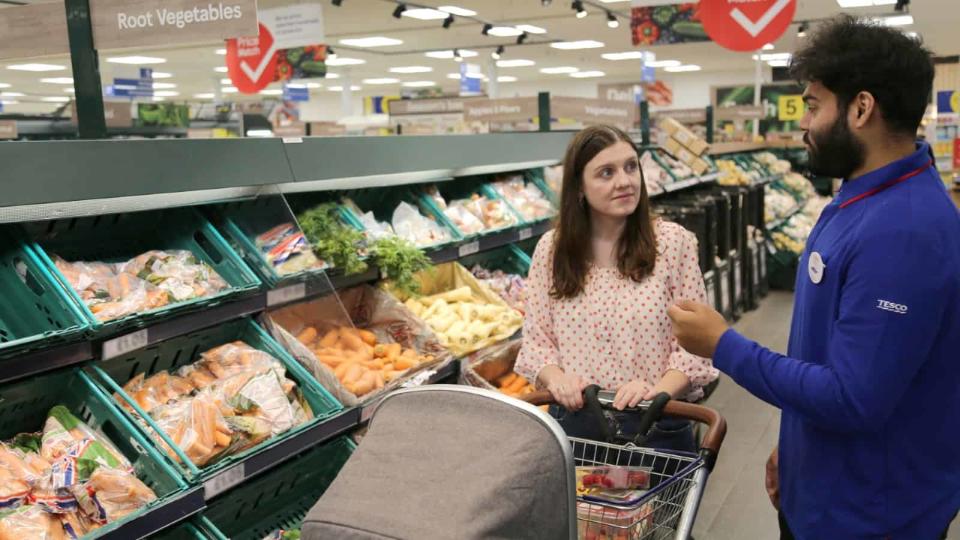Why FTSE 100 stocks Tesco and Sainsbury are back on my radar

It’s been a while since I wrote about FTSE 100 supermarkets Tesco (positively) and Sainsbury (quite positively).
Right now, for a number of reasons, they’re back on my radar:
They’re in my calendar of upcoming company results in April.
Both have upgraded their financial guidance during the course of the year.
And their valuations are at what I believe to be interesting levels.
Scale
Tesco’s financial year ended on 24 February and its results are scheduled for 10 April.
It remains the UK’s dominant grocer by far, consistently maintaining a market share of 27%-28% in recent years. As such, it has greater advantages of scale than its peers. Scale is often an important ingredient in recipes for superior profit margins.
Its rivals include Sainsbury, of course. Although the orange-liveried supermarket is dwarfed by Tesco, it enjoys some benefits of scale over its other rivals, as it’s the UK’s second-largest grocer with currently a 15.6% share of the market.
Tesco’s guidance
Tesco upgraded its full-year financial guidance in its first-half results. And further raised it when it issued its third-quarter update in early January.
At the start of the year it had guided for underlying retail operating profit of about £2.5bn. It increased this to £2.6bn-£2.7bn at the half-year stage. And then to £2.75bn in the Q3 update.
Similarly, it had guided on retail free cash flow of £1.4bn-£1.8bn at the start of the year. It upped it to £1.8bn-£2bn in the first-half results. And then pinned it at the £2bn top end of the range in the Q3 update.
Valuation
I’ve written about Tesco in the past at share prices of up to 260p. And suggested they merited a price beginning with a ‘3’. They climbed above 300p earlier this year but have since dipped back below. They’re 295p, as I’m writing.
Previously, the market was valuing the stock at around 12 times earnings, with a dividend yield of about 4%.
Despite the shares now being higher at 295p, my sums say management’s upgraded profit guidance translates into earnings growth that makes the earnings valuation no more expensive than previously.
And with the board’s policy of paying out 50% of earnings as dividends, the implied higher dividend means the yield is also as attractive as before.
Free cash flow
The upgrade in free cash flow guidance to around £2bn also strikes me as noteworthy. We’re looking at what could be a third consecutive year of £2bn+.
I think it’s noteworthy, because it represents a consistent outperformance of management’s £1.4bn-£1.8bn target.
At a 295p share price, the yield on £2bn free cash flow is around 9.7%. I view this as great value, being materially higher than what I considered to be an already-appealing 7.7% at the mid-point of the £1.4bn-£1.8bn range.
Tesco’s awesome cash generation only reinforces my belief that a sub-300p share price undervalues this dominant player in an attractively resilient market sector.
Sainsbury’s guidance
Sainsbury’s financial year ended on 2 March and its results are slated for release on 25 April. Like Tesco, it upgraded its financial guidance during the course of the year.
At the outset, it had guided for underlying profit before tax of £640m-£700m, and retail free cash flow of at least £500m.
At the half-year stage, it firmed profit guidance to the upper end of the range, narrowing it to £670m-£700m. And it lifted its guidance on free cash flow to at least £600m.
It reiterated the guidance in its third-quarter update in January.
High yield
Previously writing about Sainsbury in early November 2022, the share price was around 210p and the forecast dividend yield was 5.8%. The dividend was covered comfortably enough by free cash flow, and I saw reasonable prospects of it being maintained for the foreseeable future.
Management’s current guidance implies a payout of 13.1p per share (£310m gross) for a third consecutive year. Again, this would be covered comfortably enough by the guided free cash flow of at least £600m.
Progressive dividend
A current share price of 260p is significantly above that of early November 2022. And because the dividend has remained flat, today’s starting yield of 5% is markedly lower.
However, the company’s free cash flow yield is on a par with Tesco’s 9.7%, and with the board now believing the business can support a ‘progressive’ dividend policy for future years, I remain quite positive on the stock.
The post Why FTSE 100 stocks Tesco and Sainsbury are back on my radar appeared first on The Motley Fool UK.
More reading
Graham has no position in any of the shares mentioned in this article. The Motley Fool UK has recommended J Sainsbury Plc and Tesco Plc. Views expressed on the companies mentioned in this article are those of the writer and therefore may differ from the official recommendations we make in our subscription services such as Share Advisor, Hidden Winners and Pro. Here at The Motley Fool we believe that considering a diverse range of insights makes us better investors.
Motley Fool UK 2024

 Yahoo Finance
Yahoo Finance 